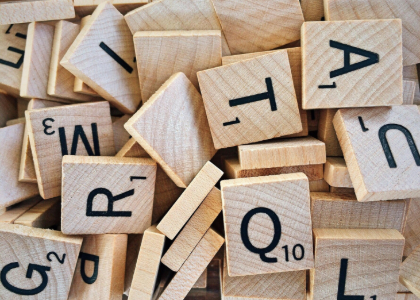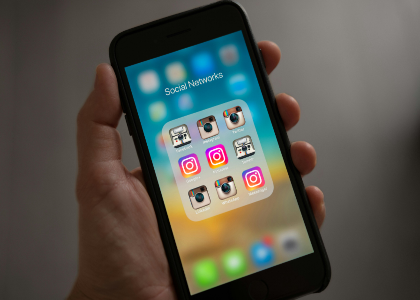Blog

Using The Golden Ratio To Create Balance in Logo Design
The [golden proportion] is a scale of proportions which makes the bad difficult [to produce] and the good easy.”—Albert Einstein It turns out Einstein was right. Although we doubt he had any inkling about logo design, digital marketing, or the internet.
As we all know now, logo design involves a huge variety of skills, from artistic ability to a thorough understanding of marketing strategies. While there are many rules and suggestions for constructing engaging logos, applying the golden ratio never fails when designers are seeking a framework that ensures aesthetic appeal.
Yes. The same ratio Einstein references has made its way into logo design, and the reasons for this are simple. Stick with me and I’ll explain why.
Designers strive to produce harmonious logos that inspire the human brain and capture the imagination. The intention of a logo is to advertise a brand, create an identity, inform, and evoke an emotional response.
The design of a logo plays a huge role in attracting customers and creating a strong brand identity. Using the golden ratio is an effective way of designing an aesthetically pleasing logo that ticks all the right boxes.
What Is The Golden Ratio?
The fundamental essence of the golden ratio is mathematical, although it’s been used in many fields by non-mathematicians, such as architects, artists, and designers.
The number 1.618 (rounded off) expresses the relationship between two quantities—two sections of a distance or space that fulfill a specific ratio. If a line gets divided into two segments, a and b, the ratio between a and b must equal the ratio between a plus b and a.
Like Pi, it is an irrational number, and in ratio form, we write it as 1:1618. A rectangle built around the golden ratio is a golden rectangle.
This ratio is also referred to as the “golden mean”,” golden number” and even “divine proportion”—descriptions that convey its apparent perfection.
In art and design, it's used to determine the best proportions between different elements, resulting in an attractive overall design. It is said that the Mona Lisa was painted using this method.
Why Is The Golden Ratio So Appealing and Famous?
There’s some uncertainty as to why the golden ratio is so attractive to the human eye, although there is no doubt that we’re drawn to this visual pattern.
The ratio is found almost everywhere in nature, from the structure of a snail’s shell to the arrangement of seeds in a flower. There is no individual explanation for the appeal of the proportion and why exactly it is such a recurring design in the natural world. But a professor at Duke Pratt School of Engineering has suggested that it’s linked to the evolutionary need animals have to scan their environment as quickly and efficiently as possible. Using the golden ratio—and golden rectangle—is the most effective way of scanning one’s visual field, and possibly accounts for its aesthetic appeal.
How To Use The Golden Ratio Rule In Logo Design
How to make a golden ratio logo? What is the golden rule in design?
You don’t have to be a mathematical whizz to use the ratio in logo design.
However, when it comes to the practical application of the golden ratio in art and logo design, it can be helpful to understand the link between it and the Fibonacci sequence.
The Fibonacci sequence comprises of numbers with each one equal to the sum of the two preceding numbers, beginning with zero and one, and—not surprisingly—expresses a ratio very close to 1:1618.
Many artists and designers are familiar with the seashell-like curve of the Fibonacci spiral, or “golden spiral”, and how using that basic structure can result in aesthetically pleasing visuals. This tool can be used by many people in many different fields. But it’s particularly important for designers, who want nothing more than to catch the attention of their audience.
Using the golden ratio and Fibonacci sequence can make it just that much easier to produce a custom logo design that customers love.
Text and Fonts
It’s easy to forget that visual appeal includes words and letters. If you’ve followed me for a while, you’ll know I find the use of fonts fascinating!
Font size, color, and style all play a part in how we view a complete design.
Typography (the use of text in a design) is definitely enhanced by the application of the golden ratio and Fibonacci sequence.
When designing a logo, you may well work with different sized text for the brand name and slogan. Using the golden ratio can help you achieve the perfect contrast in terms of font size and arrangement.
For example, if your slogan text is 10px, multiply 10 by 1.618 to determine the ideal font size for your brand name. You can also incorporate the golden ratio more subtly into text through point sizing, cape height, and leading. If you want to become a professional graphic designer to design logos, you should take the time to learn about typography hierarchy rules as well.
Overall Structure Ideas and Meaning
First impressions count, and we make them quickly. In the first 30 seconds, to be precise.
In the world of online marketing, we’re bombarded with information and brands looking to stand out. The first impression a logo makes is crucial in engaging people, and a large part of that first impression relies on design elements such as layout, negative space, color, and graphics.
Having effective focal points also keeps viewers’ attention. The golden ratio grids and Fibonacci sequence can help to create a logo that works with a user’s intuitive visual processing.
Image Balancing
The rule of thirds is well known in photography, and you can apply it along with the golden ratio to create a well-balanced logo.
Simply put, it suggests that dividing a canvas (or screen in this case) into three sections both vertically and horizontally can provide the best focal points where the lines intersect.
Using the Fibonacci spiral (an approximate visual representation of the golden ratio) results in a similar framework, ensuring that images are aesthetically pleasing. The Toyota logo is a great example of this, as it incorporates all of these elements in its design.
What top brands use the golden ratio logo?
Among the most popular brands today, Pepsi, Twitter's blue bird, National Geographic, and Apple are examples of golden ratio logos. However, it is quite possible that several companies used these golden rules of proportional relationships when creating their brands since they are tough in art and design schools nowadays.
In Conclusion: Go For Gold and Grids
It’s no surprise that some of the most recognizable brands in the world have logos based on that construct: Twitter, Apple, BP, and Pepsi all have logos that use the divine proportion.
Concepts such as the golden ratio can play an extremely valuable part in logo design as they create an end result that has mass appeal and is hugely memorable. And that’s what every designer, brand, and business wants.
“Beauty is not perfection. Real beauty is proportion.”—Anastasia Soare
More tips and tricks on the blog


